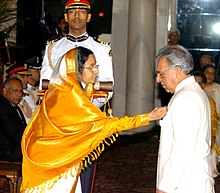Presently, he is the Chairperson of the Board of Governors of Indian Institute of Technology (IIT), Kanpur and Chairman of the Standing Committee of the IIT Council; Chairman of the overarching Committee set up my Ministry of Education for strengthening the Assessment and Accreditation of Higher Educational Institutions; Chairperson of the Oversight Committee of Science & Engineering Research Board (SERB-DST), Chairman of the Expert Committees of DST on 'Sophisticated Analytical & Technical Help Institutes (SATHI) & 'Sophisticated Analytical Instruments Facilities (SAIF)'; and Chairman, High-powered Committee of Indian Knowledge Systems, Ministry of Education-Government of India besides being a Member of National Security Advisory Board, and Space Commission and Honorary Distinguished Advisor in the Department of Space/ISRO.













